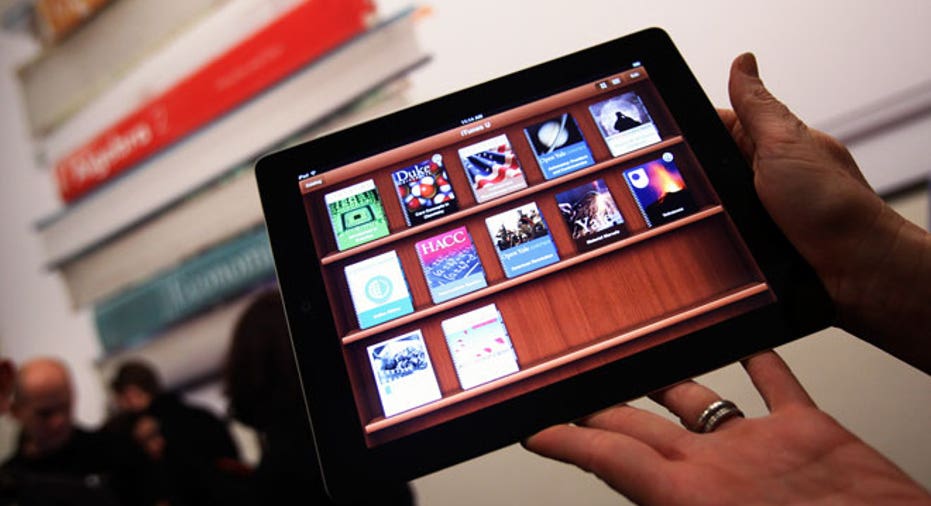Glue, Scissors and an iPad

If your child just went back to school, chances are you spent at least one night last week elbowing other parents at Staples while hunting for school supplies.
If there’s anything to be grateful for, be glad you were only fighting over $3 protractors and not $399 iPads.
At a time when everyone seems ‘iMad’ for Apple gadgets (sales of the new iPhone are expected to have a noticeable impact on U.S. GDP, if you can believe it), it’s easy to imagine that the iPad will someday become a necessity for students.
That day may be closer than you think.
Thousands of public school districts across the country are taking serious steps toward making iPads an important tool in their curriculum – and at a rapid pace. Apple (NASDAQ:AAPL) sold almost a million iPads to education buyers in the K-12 market in the third quarter alone, doubling sales from a year ago, according to an analyst at Needham & Co. By contrast, PC shipments in the education market reportedly fell 13.9% during the same period.
While schools have been testing iPads for awhile, many of them are now looking to deepen their investment. A school district in San Diego recently spent $15 million expanding its iPad program, taking on 26,000 iPads in what was one of the biggest iPad deployments to date. The McAllen school district in Texas, which had only distributed 5,000 devices as of last April, will provide nearly 20,000 to students this fall.
The goal for many of these schools is to eventually have an iPad for every student. In an October 2011 survey of 25 school technology directors, more than a third said they expect to achieve a 1:1 ratio in the future, with most estimating a timeline of three to five years. Only 22% expect it to take more than five years.
But implementing iPads in an educational setting comes with its challenges, one being the cost. Schools aren’t getting huge discounts on their iPads – an iPad 2 bought in bulk costs $379 per unit as opposed to the normal $399.
Township High School District 214 in Illinois, which started with 350 iPads in 2009 and now has 2,550, said it is evaluating whether or not a wider rollout is feasible. Like other districts, District 214 is buying iPads with the funds traditionally allocated toward replacing desktops.
The school district is also mulling whether to start charging students a yearly fee of $50 to $125 to cover apps, digital books and insurance costs, says Keith Bockwoldt, the district’s technology director. He assures the fee isn’t too hefty – especially since students can use the device however they wish and get to keep it for good.
“We don’t want to put students inside a box,” he says.
Not everyone is convinced that the increasing adoption of iPads in schools is a good thing.
Matt Burns, a writer at TechCrunch and father of two who lives in Flint, Mich., says he’s nervous the iPad will become a crutch for teachers and students. While he sees value in digital learning, he worries that having instant access to information means there’s less of a need for students to truly internalize that information.
Flashy videos and interactive apps can make science courses more engaging, but those same features could undermine learning in subjects like reading, he adds.
“Too much technology can be dangerous,” he says.
Proponents of the iPad say is that the interactive device offers students a level of access and portability that not only enhances their learning, but keeps them in step with the broader technological current. A report by Forrester Research suggests that more than 112 million Americans, or a third of the U.S. adult population, will own a tablet by 2016.
“Kids are growing up with these devices already. If they’re coming to school and we’re not giving them devices to keep them engaged, we’re losing them,” says Bockwoldt.



















